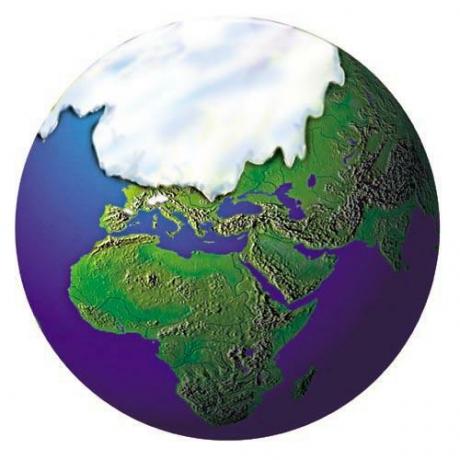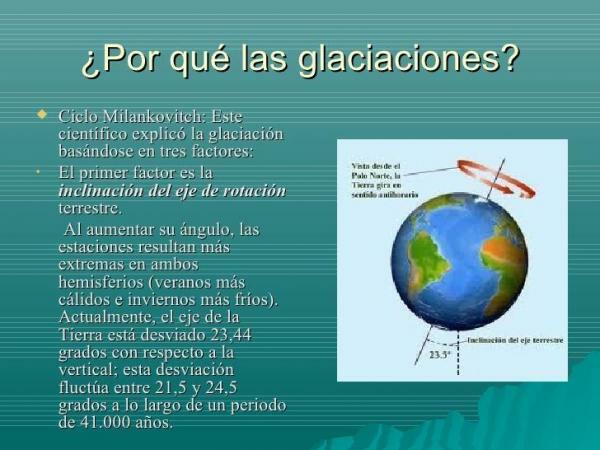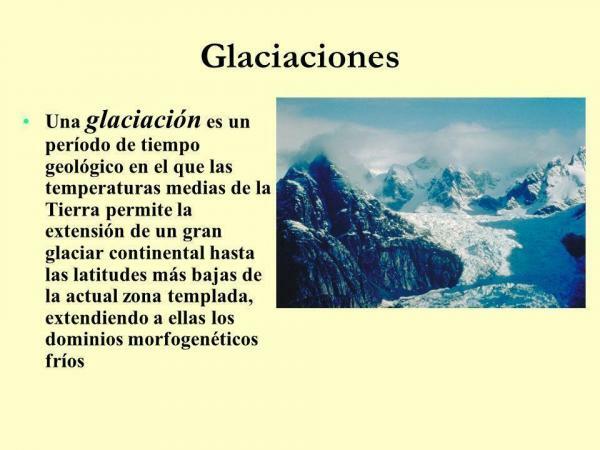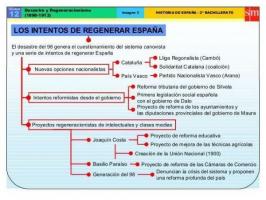Major ice ages on Earth

Image: PortalCiencia
Our planet has gone through numerous phases throughout its history, there being stages in which the Earth was very different from today. One of the most famous stages of our planet are the glaciations, periods in which the Earth's temperatures decrease and the polar zones increase. Because of its importance, today in this lesson from a TEACHER we are going to talk about major ice ages on Earth.
Ice ages are periods of long duration characterized by decreasing temperatures throughout the planet, causing among other things the extension of the polar caps throughout the balloon.
Glaciations have existed throughout the history of the planet, and many experts disagree on the years that each of these glaciations has occupied. For many, we are currently in an ice age, due to the existence of polar caps in both hemispheres. For others, we are in an interglacial period, that is, warmer periods located between two glaciations.
To understand glaciations we must know the Causes that cause it, among which are the following:
- The gases greenhouse effect
- The position of the continents, that is, when they block the warm currents
- The inclination of the axis of the earth's rotation
- The volcanoesof the Earth and its activity

Image: Geology
Experts talk about 5 great glaciations, although they always specify that it is very difficult to classify them exactly, being in each one of them very different glacial periods. In this section of the lessons on the main glaciations on Earth we are going to talk about these 5 glaciations.
First glaciation
The first ice age in the history of the planet is the so-called Huronian, which took place between 2.4 billion years and 2.1 billion years. It took place between the Sideric and Riassic periods, that is, in the Paleoproterozoic era. It's the glaciation longer in time and, according to experts, one of the most intense being compared by experts with the snowball Earth hypothesis.
Its origin may be due to the first cyanobacteria, also known as blue-green algae, whose photosynthesis could break the balance of the gases of the planet, destabilizing the climate of the epoch.
Second glaciation
The second ice age is the Cryogenic period, located between 850 million years and 635 million years. This glaciation gets its name from the period in which it happened, that is, the Cryogenic period, in the Neoproterozoic era.
According to experts this was the strongest glaciation of all, thinking that it caused a snowball Earth effect, freezing the planet completely. Other theories speak that the end of this period brought with it a Cambrian explosion, that is, the sudden appearance of numerous multicellular beings.
Third glaciation
The third ice age is called Andean-Saharan, which took place between 450 and 420 million years ago. It happened in the Ordovician and Permian periods, in the Paleozoic era. It is considered a minor glaciation, although it managed to freeze places as hot as Brazil and part of Africa.
Fourth glaciation
The fourth ice age is called Karoo, which took place between 360 and 260 million years ago. It happened in the Carboniferous and Permian periods, in the Paleozoic era. Throughout these millions of years the oxygen of the planet increased, which allowed the development of larger species.
Fifth glaciation
The fifth and last ice age is the Quaternary, being the one we are currently in. It began 2.58 million years ago, spanning the Neogene period, in the Cenozoic era. It is characterized by the extension of polar layers in both hemispheres, both in Antarctica and Greenland.

Image: Slideshare
Throughout history there have been two outstanding glaciations, two moments much more terrible than the rest. These notable glaciations are as follows:
- Snowball Earth: We have already discussed it earlier in the lesson, but its importance makes us explain it in greater detail. This term refers to a hypothesis according to which an ice age caused the entire planet to freeze. It happened about 700 million years ago, and turned the planet into a big white ball, even freezing the oceans.
- Würm glaciation: It is the last of the ice ages that took place in the Quaternary stage. During this time the ice caps occupied large areas of the continents, the surface of the oceans decreased and temperatures around the globe decreased.



